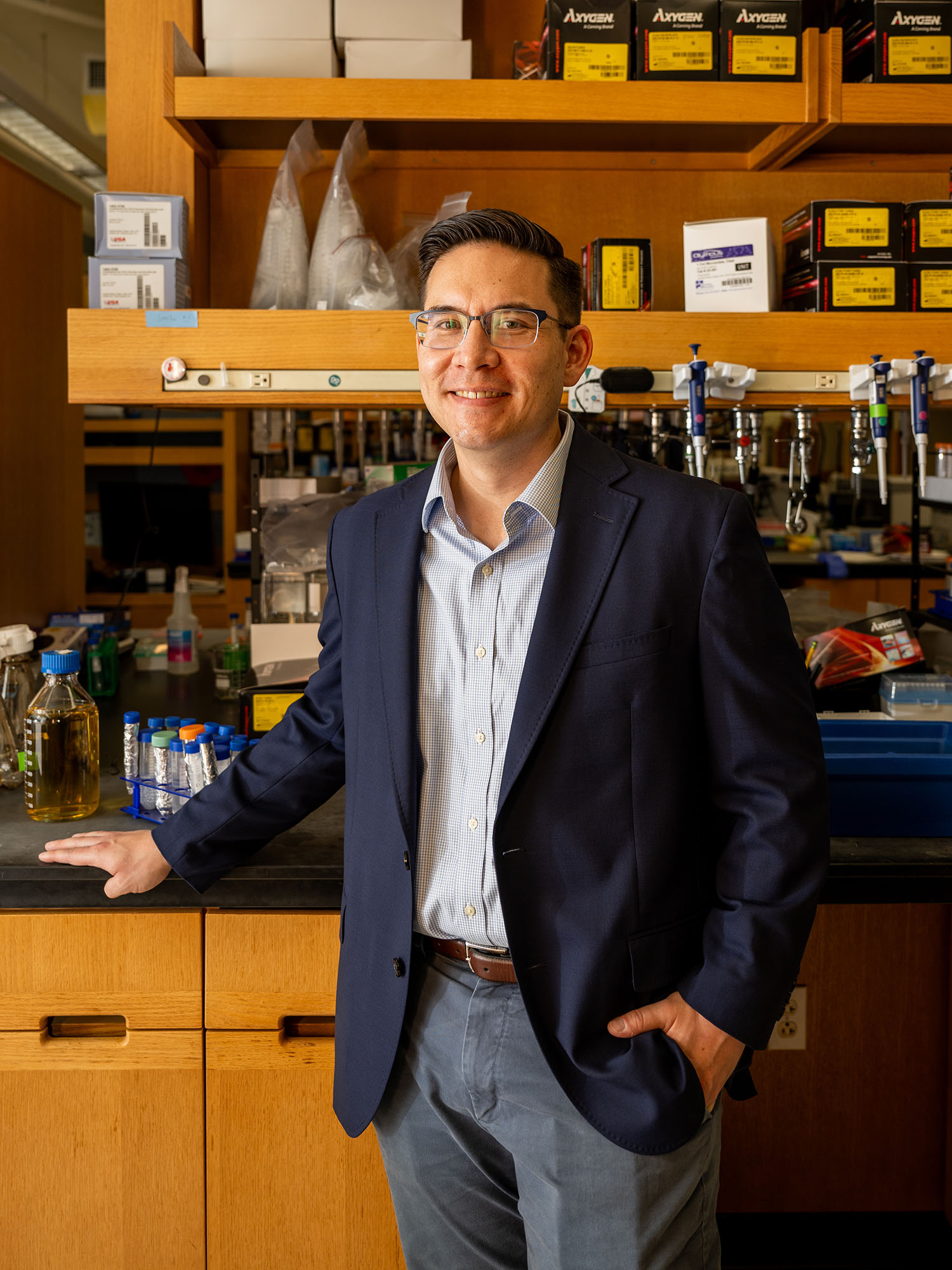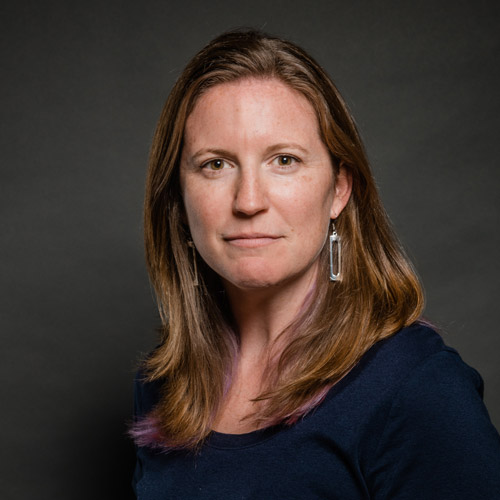BU Biomedical Engineer Wins a 2024 National Institutes of Health Director’s Transformative Research Award
Honor for Alexander A. Green will support high-risk project that could lead to improved cancer treatments and other therapies

Alexander A. Green, a BU College of Engineering associate professor of biomedical engineering, says the NIH award will enable research that is “pushing the frontiers.”
BU Biomedical Engineer Wins a 2024 National Institutes of Health Director’s Transformative Research Award
Honor for Alexander A. Green will support high-risk project that could lead to improved cancer treatments and other therapies
Before a new car rolls onto the road, engineers measure how it reacts to different forces, from passengers plonking into the seats to jarring collisions. Understanding the impact of these forces provides essential insights into the durability and effectiveness of the vehicle and its components—an approach taken for just about every new product, from cell phones to simple bottle flip tops.
Now, Boston University engineer Alexander A. Green wants to do the same kind of force measurement for biological cells, with the goal of one day improving cancer therapies.
He hopes that by tracking the forces involved when cells interact with one another, like in cell-based cancer therapies, he can better control their behavior and pave the way for more potent disease treatments. It’s an out-there, novel idea—and it could fizzle or it could change lives. But Green’s chances of success have just been given a major boost.
A BU College of Engineering associate professor of biomedical engineering, Green has been named a 2024 National Institutes of Health Director’s Transformative Research Award winner. Founded in 2009, the award is supported by the NIH Common Fund’s High-Risk, High-Reward Research program and is given to researchers “proposing transformative projects that are inherently risky and untested but have the potential to create or overturn fundamental paradigms and may require very large budgets.”
Green is sharing the award’s $7.2 million funding with two researchers from Yale University, Julien Berro and Xiaolei Su, and he says their proposed cell forces project would typically be a tough one to win backing for—all promise with, so far, little proof that it’ll work.
“It’s a really important funding mechanism,” Green says of the award. “This kind of blue-sky research is super important—we’re pushing the frontiers.”
Green is just the third BU researcher to be given the honor, behind Bela Suki, an ENG professor of biomedical engineering, and Steve Ramirez (CAS’10), a College of Arts & Sciences associate professor of psychological and brain sciences.
Alex’s efforts represent the best of what engineers can do to serve society, especially when working in conjunction with experts in diverse disciplines.
“This NIH award is a terrific acknowledgement of Alex’s thought leadership in engineering biology,” says Elise Morgan, ENG dean ad interim and Maysarah K. Sukkar Professor of Engineering Design and Innovation. “His work in synthetic biology and synthetic mechanobiology has the potential to produce groundbreaking advances in the treatment of cancer. Alex’s efforts represent the best of what engineers can do to serve society, especially when working in conjunction with experts in diverse disciplines.”
Green is the team’s ribonucleic acid (RNA) expert, bringing his knowledge of the molecules that help regulate cells and translate genetic instructions. He aims to make RNA-based sensors that monitor whether a force-detecting protein—designed by Yale’s Berro—is firing.
“The other aspect of the project is to not only detect forces, but to have the cell carry out some kind of response,” says Green, who’s also a member of the BU Biological Design Center. “So, we’re acting on that information to control cell behavior.”
In CAR T-Cell cancer therapy, for example, a patient’s immune cells, although reengineered to fight the disease, will often run out of steam: the forces involved in the struggle exhaust them, says Green. But, by influencing the cell’s behavior, they could push back its point of burnout and prolong the therapy’s effectiveness.
That innovative approach to improving healthcare technologies and therapies fits with Green’s broader research. He studies what’s happening in the depths of cells to build organic sensors, known as biomolecular control systems; create antimicrobial coatings; and make better and cheaper diagnostic tests for viruses and diseases—and even to predict the potential performance of athletes and soldiers.
“A lot of the stuff we’re working on is tool development,” says Green. “I’m an engineer—I like tinkering with things and solving problems.”
The cell forces team initially connected through the Research Corporation for Science Advancement’s Scialog program, which also backed them with seed funding, allowing them to lay a foundation for the project and generate some preliminary data. Green says the graduate students in his lab—particularly McKayla Vlasity (ENG’26)—played an important role in those initial steps and will continue to be involved as the project progresses.
“They helped build up some of the data we needed for this project and they work so hard in the lab all the time,” says Green, who hopes his win inspires his students to “seek out interesting areas of research and find out where the gaps are.” Even if, perhaps, that occasionally means ignoring the advice of established researchers like him.
“A lot of times in research you have to not listen to people—you have to go your own way,” he says. “Eventually, that’s the only way you’ll do anything really new. You’ve got to do things that other people didn’t think would work; those are ultimately going to be the most impactful contributions.”


Comments & Discussion
Boston University moderates comments to facilitate an informed, substantive, civil conversation. Abusive, profane, self-promotional, misleading, incoherent or off-topic comments will be rejected. Moderators are staffed during regular business hours (EST) and can only accept comments written in English. Statistics or facts must include a citation or a link to the citation.